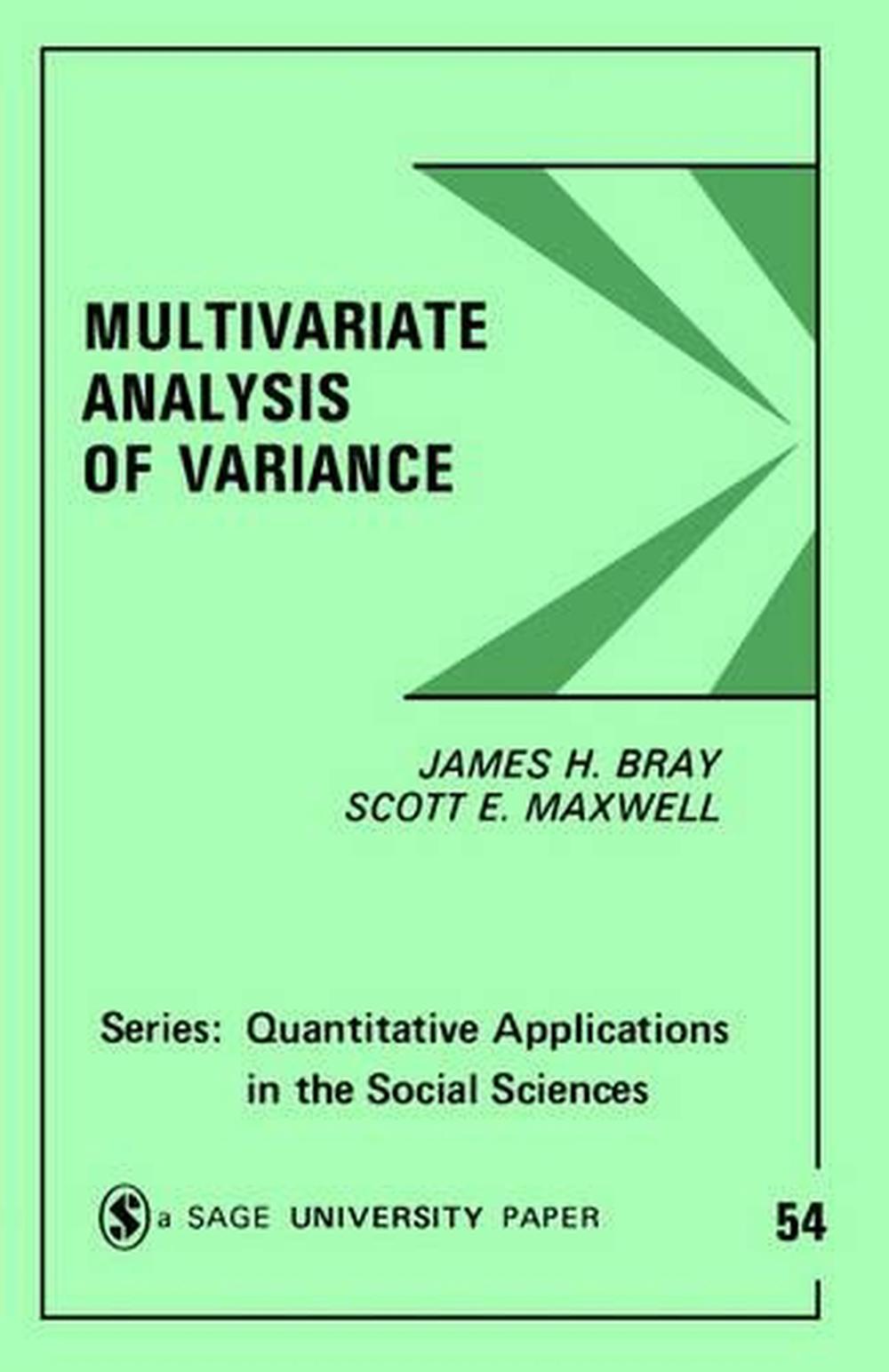
When you click on links to various merchants on this site and make a purchase, this can result in this site earning a commission. Affiliate programs and affiliations include, but are not limited to, the eBay Partner Network.
Multivariate Analysis of Variance by James H. Bray (English) Paperback Book

- Item No : 156830711418
- Condition : Brand New
- Brand : No brand Info
- Seller : the_nile
- Current Bid : US $54.55
-
* Item Description
-
The Nile on eBay

Multivariate Analysis of Variance
by James H. Bray, Scott E. Maxwell
Analysis of variance (ANOVA) is one of the most frequently employed statistical techniques in the social sciences because it provides a flexible methodology for testing differences among means. This monograph considers the multivariate form of analysis of variance (MANOVA) and represents a logical extension of an earlier paper in this series, Analysis of Variance. It provides a unique perspective for readers seeking to understand how MANOVA works and how to interpret MANOVA analyses.
FORMAT
PaperbackLANGUAGE
EnglishCONDITION
Brand New
Publisher Description
Bray's monograph considers the multivariate form of analysis of variance (MANOVA). The primary emphasis of the book is on methods for interpreting MANOVA statistical analyses. These are illustrated through the use of two numerical examples: one involves a small, hypothetical data set, which can be analyzed by the reader with minimal effort; the other involves real data and shows how MANOVA can be used in actual research. MANOVA represents a logical extension of Analysis of Variance by Iversen and Norpoth (QASS 1).
Author Biography
James H. Bray, Ph.D., is a clinical and family psychologist and an associate professor of family medicine at Baylor College of Medicine. A frequent speaker at national conferences and guest on national television and radio shows, he lives in Houston, Texas.
John Kelly is the coauthor of numerous books on relationships, including "Three on the Edge: The Stories of Ordinary American Families in Search of a Medical Miracle" and the international bestseller "The Secret Life of an Unborn Child." He lives in New York City. "From the Hardcover edition."Table of Contents
Introduction to Multivariate Analysis of VarianceOmnibus MANOVA TestsAnalyzing and Interpreting Significant MANOVAsCausal Models Underlying MANOVA AnalysesComplex DesignsOverview of Computer Programs for MANOVA
Details
ISBN0803923104Short Title MULTIVARIATE ANALYSIS OF VARIASeries Quantitative Applications in the Social SciencesLanguage EnglishISBN-10 0803923104ISBN-13 9780803923102Media BookFormat PaperbackSeries Number 54Illustrations YesImprint SAGE Publications IncCountry of Publication United StatesEdited by S.E. MaxwellPlace of Publication Thousand OaksAffiliation Baylor College of Medicine, Houston, TX, USA Baylor School of MedicinePages 80DOI 10.1604/9780803923102UK Release Date 1986-01-30NZ Release Date 1986-01-30US Release Date 1986-01-30Publisher SAGE Publications IncYear 1986Publication Date 1986-01-30DEWEY 300.723Audience Professional & VocationalAuthor Scott E. MaxwellAU Release Date 2005-11-01


-
- NO GRID Survival Projects
- $ 37.00
















